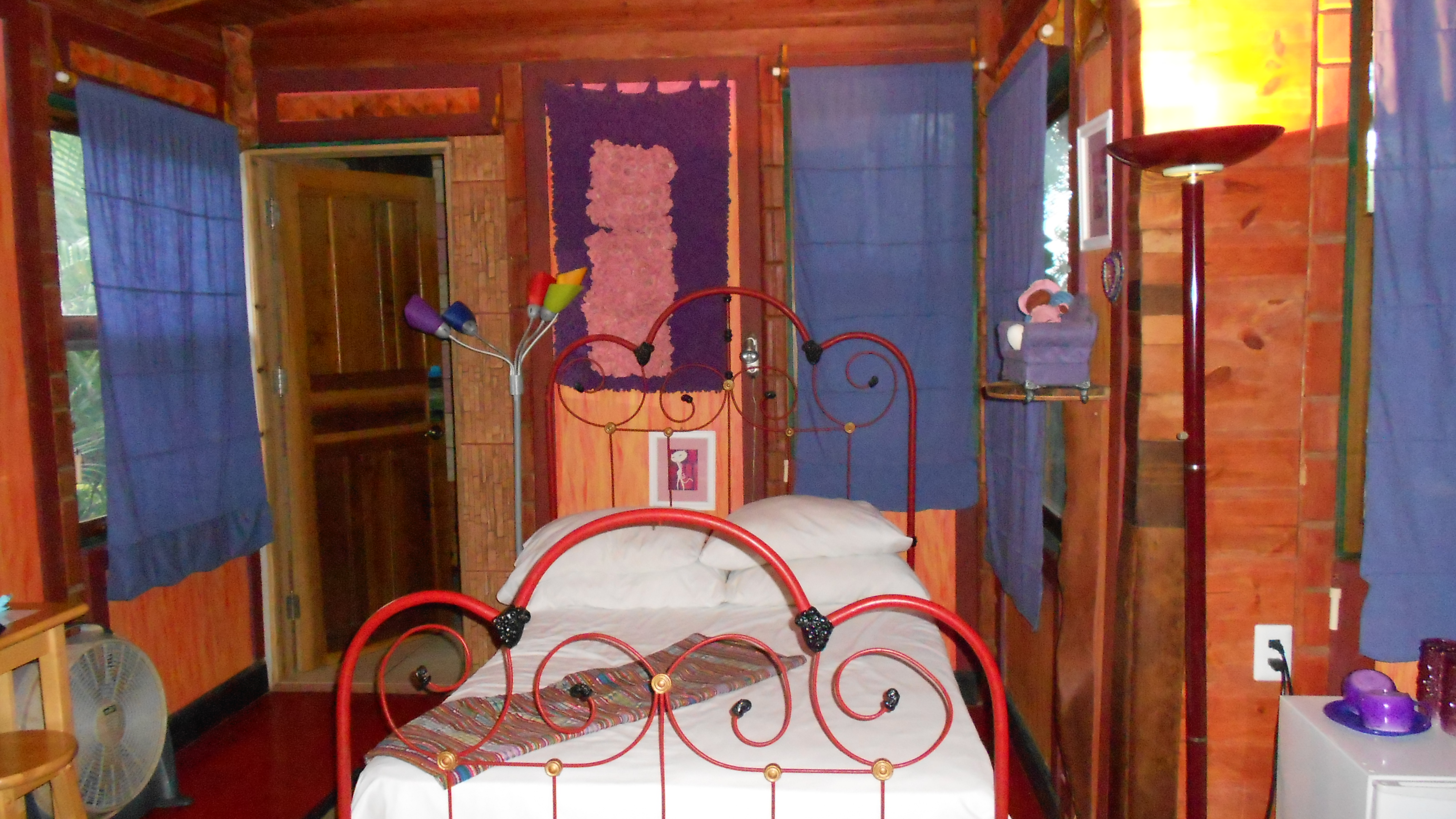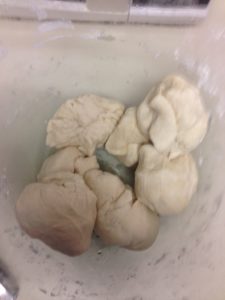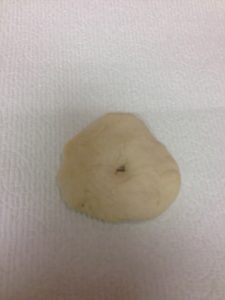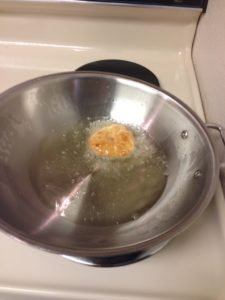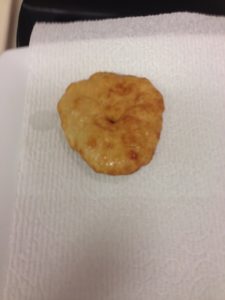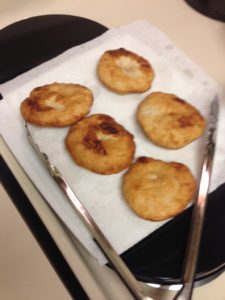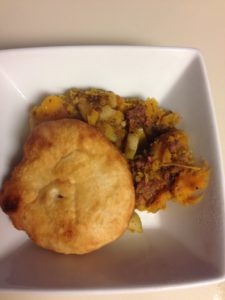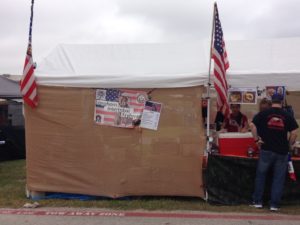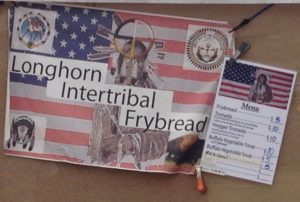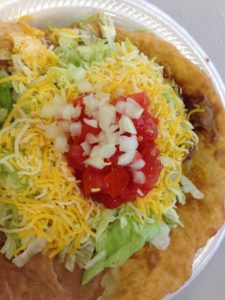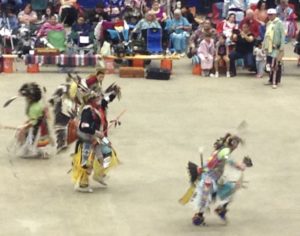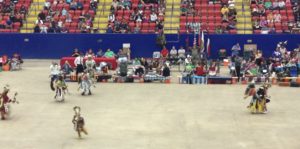A few writers who have participated in my monthly spoken word and storytelling show, The Austin Writers Roulette, have written about frybread. Many different cultures around the world have their staple breads, but I’ve never tried any Native American bread before.
Now that I’ve cooked up ethnic dishes for the past couple of weeks, I’ve finally gotten around to frybread. I mixed all-purpose flour, water, salt, and baking powder; kneaded it into a ball; and let it set for about 30 minutes. Although the instructions stated that the longer it set, the fluffier the end product would be.
I cleaned my apartment in the meantime and once I finished, I heated up the oil in my wok and rolled the dough into balls. I flattened the dough out with the palm of my hands and put a small hole in the center.
Using tongs, I slid the dough into the wok. If it sank to the bottom, then the oil wasn’t hot enough. Since I’d used just enough oil to get the job done, I wasn’t about to get any closer to boiling hot grease to see if the dough touched the bottom or floated.
I had a pretty good process going. As soon as I’d prepared one to slide into the wok, the one already frying was ready to be removed.
When I bit into the tester piece of bread, my first thought was, “Dough brick.” Fortunately, it wasn’t quite as hard and heavy as my first impression. But not as light and airy as I’d hoped either. I made quick work of the whole batch.
Even so, a thin smoky haze floated throughout my apartment. To prevent the activation of my smoke alarms, I turned on the stove air vent and took the wok off the burner. Just the night before, the culinary challenge was to bake butternut squash, mix it with beef sausage, chopped pecans, brown sugar, butter and sage. All that deliciousness was bound to be a hit. Only thing that stops me from making butternut squash more frequently is cutting that damn thing open in the first place.
As with every new recipe, I realize it’s not the “authentic” experience, but I definitely enjoy mixing some familiar flavors in novel ways.
The following day, I attended my first ever Native American powwow. One of my fellow rouletters invited me, especially so I could try frybread. She was volunteering at the ticket booth and was supposed to get off around 11:30, but had to work nearly an hour later since her replacement volunteer ran late.
I walked around the market and looked in on the start of the traditional dance parade in the arena while I waited. Once she was finally free of her volunteer duties, we waited in line at one of the vendors where she knew the owners.
We both got a regular tostada, which used frybread instead of a tortilla. I made a mental note that when I attempted to make another batch of frybread again, to make the dough in the morning to fry it up for dinner. Perhaps then it will be closer to the consistency of that delicious frybread.
Afterwards, we watched some of the competition.
The announcer called out the various categories of competition, which consisted of several individuals performing at the same time. One of the things they were being judged on was how well they kept up with the live music being drummed and chanted. There were two drum circles and unlike African musicians who collaborate with the dancers, these musicians challenged the skills of the dancers to keep in time with their drumming, which could change tempo without notice.
As usual with such an experience, I wanted to learn more about meaning behind powwows since I’m sure I only glimpsed a small part of the significance since I only could truly see the things which I readily understood.

